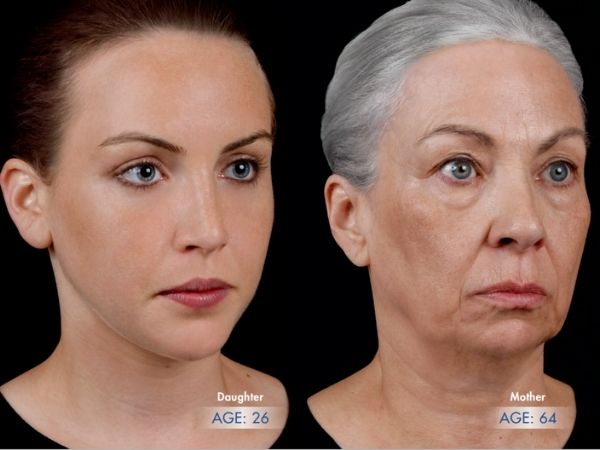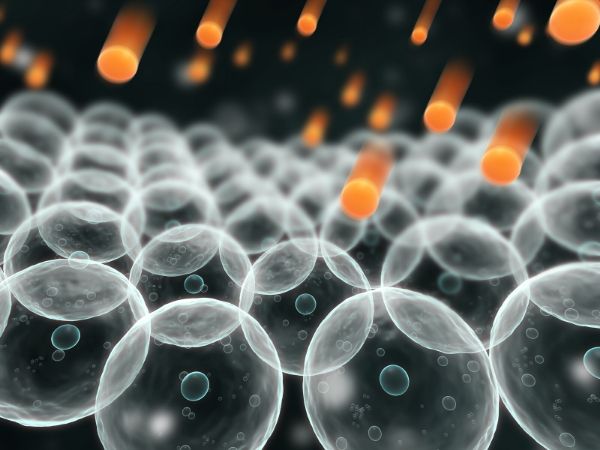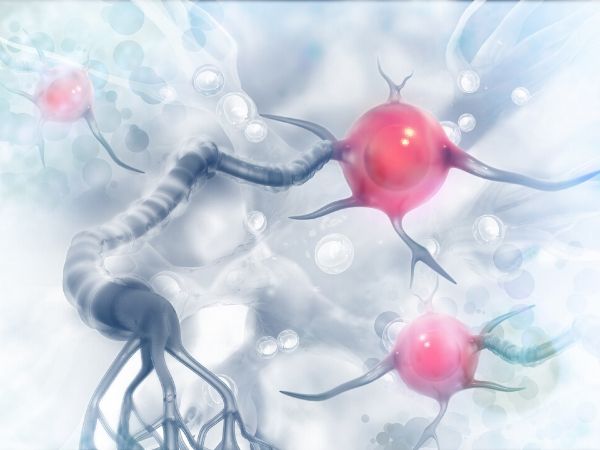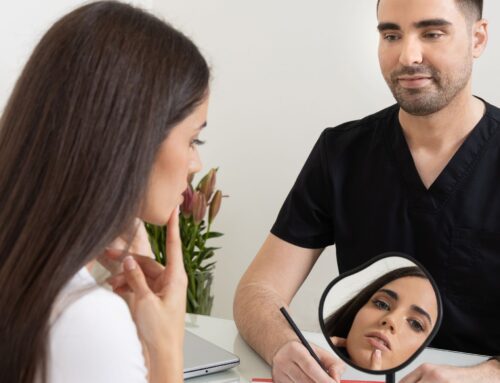Only the gods never age or die. Everything else in the universe is destroyed by almighty time and erases all traces.
– Sophocles, Oedipus
The desire for a young and vital appearance has attracted man since ancient times. Aging, however, remains a fact of life. Scientific achievements and advances in the field of medicine have significantly extended the average lifespan of an individual. Therefore, the aging process of the skin is increasingly becoming a topical issue for both dermatologists and ordinary people. The answer to the question of why the skin ages is complex and depends on several factors.
Science defines aging as a genetic and physiological process that changes the structure and function of cells in our body, thereby affecting all other processes that take place in the body. In short, aging is a process that leads to a gradual loss of the body’s structural integrity and physiological functions.
It is a process that consists of two types of factors that affect our body: intrinsic (internal) factors, i.e. processes that occur in the body and extrinsic (external) factors from our environment, which also, in synergy with these internal processes, have their own importance and role in the aging process.

Many theories have been proposed to explain the aging process, but still none of them is completely satisfactory. Contemporary biological theories of aging can be divided into two main categories:
- Theories of programmed aging
- Damage/Fault Theories .
Theories of programmed aging imply that aging is written into the genetic makeup and follows its biological schedule; while damage theories assume that the aging process is the result of accumulated damage caused by external or internal influences, such as injuries, UV radiation, etc.
Damage theories include some of the following theories:
a) Protein cross-linking theory
This theory is based on the process of cross-linking of protein, DNA and other building molecules in our body, resulting from certain chemical reactions in the body.
Over time, this association leads to changes in the chemical and biological properties of the cell. Although these changes occur at the level of individual cells, they can eventually lead to significant dysfunctions of the body’s systems.
As a result of cross-linking, the tissue becomes rigid and therefore is no longer able to perform its function in the proper way within the organism. For example, cross-links are associated with loss of skin and muscle tissue elasticity, delayed wound healing, and decreased joint mobility in older individuals, among others.
b) Theory of wear and tear
This theory tells us that the effects of aging are caused by continuous wear and tear on the body due to constant use. Our cells and organs, as well as the functions they perform, are exposed to stress, which gradually leads to cell damage and organ dysfunction. Essentially, this theory advocates the idea that external factors, such as exposure to radiation, various toxic substances, as well as harmful UV radiation, negatively affect the body and lead to processes within it that trigger the aging process. A good example of such a process would be the creation of free radicals that have a detrimental effect on cellular material and tissue, leading to their decay. It should also be noted that there are certain cellular systems, such as the nerve cells of the brain, that do not regenerate over time. This means that as the cells die over time, the functionality of the entire cellular system is slowly lost.
c) Theory about the influence of free radicals
Free radicals are a byproduct of cellular activity. When cells make energy they also produce unstable oxygen molecules that contain a free electron that makes them extremely unstable. These free radicals bind to other molecules in the body and thus prevent proteins and other essential molecules in the body from performing their primary function.
The appearance of free radicals is a natural and inevitable process, but it is important to draw attention to the fact that improper nutrition, stress, consumption of tobacco and alcohol, as well as exposure to harmful radiation, are factors that promote the appearance of free radicals in the body. Research has shown that taking antioxidants found in certain food ingredients is the best way to reduce the amount and harmful effect of free radicals on the body.

c) Theory of somatic mutation
The aging process also depends on what happens to the genes inherited from the parents. From the moment of conception, cells are constantly reproducing. Every time a cell divides there is a chance that some genes will not be copied correctly. This phenomenon is called mutation.
Mutation can also be caused by external factors such as toxins, radiation and harmful UV radiation. In most cases, the body manages to correct or destroy most of these mutations. But not all. Over time, the number of mutated cells increases, creating a process we call aging.
The theories of programmed aging include the following theories:
a) Neuroendocrine and immunological theory
These two theories have a similar starting point: that aging is a normal and natural process that is inevitable, and that the duration of the neuroendocrine and immune systems is limited in time.
The first of these theories, the endocrine theory, says that the aging process is closely related to the secretion of hormones in our body that regulate the work of organs and most biochemical processes in the body, from metabolism, utilization of ingested nutrients, fluid excretion to reproduction. Over time, these endocrine processes of secreting vital hormones become less and less efficient, which leads to inevitable changes in the body, and then to aging.
Another theory is the immunological theory, which advocates the view that aging is an autoimmune phenomenon that is caused by a change in the functions of the immune system. Over time, the immune system becomes weaker and less effective. The number of antibodies, which represent the body’s basic defense system, decreases and thus the efficiency of the entire system weakens. Proponents of this theory think that this process is directly responsible for the appearance of aging of the organism.

b) Genetic theory
Aging also depends on the genes we inherit from our parents. Longevity is determined at the moment of conception and depends on the genes passed on in the genetic record. The basis of this theory is based on the fact that segments of DNA called telomeres determine the maximum lifespan of a cell. With each cell division, these telomeres get shorter and shorter, until eventually they are lost completely. After that, every further cell division without telomeres damages the chromosomes and leads to the death of the cell itself. Research has shown that low physical activity and obesity lead to the shortening of telomeres and, therefore, to a shorter life span of the cell, which is an introduction to the accelerated aging process.
Although these theories help us understand certain mechanisms of aging, we still do not know its true nature. However, understanding certain aspects of aging gives us insight into ways to slow down skin aging, which will be discussed in the next blog .
Sources:
Filipović, T.. “Theories of aging and lipofuscin as a marker of cellular aging.” Praxis Medica 45.2 (2016): 61-64.
Yin, Kunlin. “Modern Biological Theories of Aging.” Aging and diseases vol. 1,2 (2010): 72-74.
Wijg J, Kennedy B, K: The Essence of Aging. Gerontology 62(2016):381-385.






